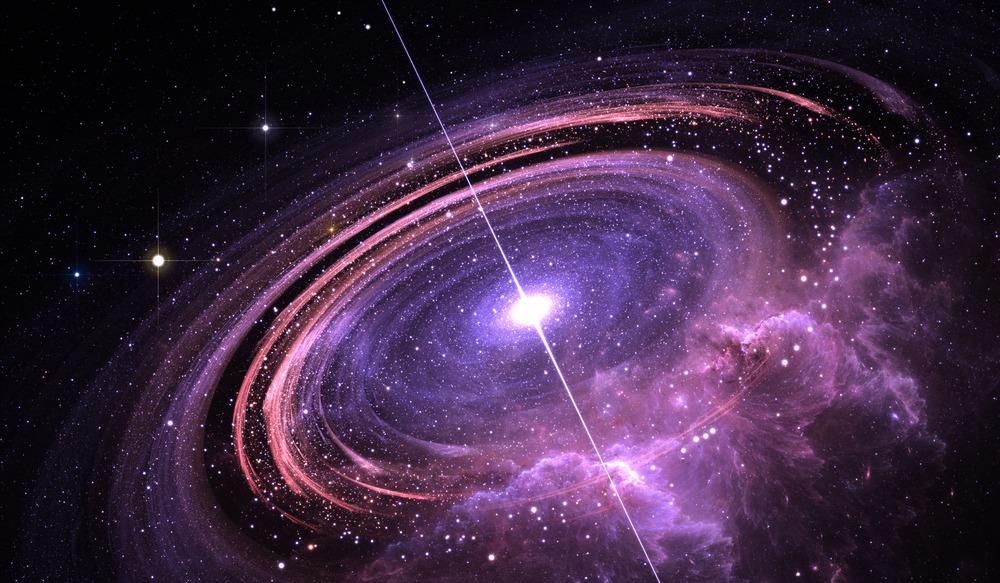New research indicates that if neutron stars have mountains, they are fractions of a millimeter in height.

Image Credit: Jurik Peter/Shutterstock.com
Neutron stars are stellar remnants left behind by the gravitational collapse of massive stars composed of at least the second densest material in the known Universe. The composition of these mysterious objects is a field of intense study in cosmology and astrophysics.
New research may have brought us a step closer to understanding neutron stars, revealing that the surfaces of these stellar remnants could be punctuated with mountains. These topological features challenge the definition of the term ‘mountainous’ as they are likely to be no more than mere fractions of a millimeter tall.
The minuscule dimensions of mountains on the surface of neutron stars result from the immense gravitational force exhibited by these objects; forces that can be greater than our planet's gravitational force by a factor as significant as 40,000 billion.
These figuratively massive findings come courtesy of complex computer modeling developed by Fabian Gittins, a Ph.D. student in the Southampton Theory Astrophysics and Gravity (STAG) Research Centre at the University of Southhampton in the UK, and his team.
Gittins is the lead author of a paper published in the latest edition of the journal Monthly Notices of the Royal Astronomical Society that details the findings he gathered from using this new computational model to simulate a realistic neutron star.
The Gravity of the Situation
When considering why mountains on the surface of neutron stars should be so tiny, it is essential to consider just how tremendously dense these stellar remnants are.
To put this into perspective, if you could scoop up a teaspoon full — about 5 milliliters — of this neutron star material, it would have a mass of around 6 trillion kilograms. Neutron star matter gets compressed to such incredible densities due to the processes that create these stellar remnants.
The life of a star is the story of a battle between outward and inward acting forces. As gravity pushes stars inwards, this incredible pressure forces atoms together and causes nuclear fusion to occur. Radiation pressure created by these fusion processes provides the outward pressures that help the star resist complete gravitational collapse.
The heavier atoms are, the more pressure it takes to force them together. That means when stars run out of hydrogen in their core and can no longer create helium — the lightest and second-lightest elements, respectively — fusion stops. Therefore, resistance against gravitational collapse ceases too.
When this collapse occurs, it happens so rapidly that the star’s outer layers are puffed out or shed in a supernova explosion. However, the collapse creates enough pressure to spark the fusion of heavier elements granting an outward force that impedes the collapse. This pattern repeats throughout a star’s lifetime, with the number of collapses dependent on how massive the star is.
While our Sun will end its life as a white dwarf, for its larger counterparts with between 8 and 20 times the mass of our star, the pattern will repeat until all the outer layers are gone and the pressure in the core — now between 1 and 1.4 solar masses — is so intense that electrons and protons form a soup of neutron-rich material.
The core’s diameter shrinks to around 10-20 km — about the size of a large city on Earth — but it still has a mass that is somewhere in the region of the Sun squeezed into that diameter. At this point, the only thing protecting this stellar remnant from complete collapse and becoming a black hole is the quantum phenomena possessed by neutrons.
The intense gravitational force that arises from this incredible density molds neutron stars into almost perfect spheres—the source of that slight imperfection being these tiny mountains.
The model of neutron star mountains suggested by Gittins and his team is not the first time that such geological features have been factored for neutron stars. However, previous findings have suggested that mountains on the surface of neutron stars would be greater by two orders of magnitude, making them a few centimeters tall.
Gittins says that the reason for this disparity is the fact that prior models have assumed the crusts of neutron stars are stretched to maximum stress tolerances at every single point. This, says the researcher, is something quite unrealistic.
The model developed by the team may have implications beyond just the calculation of mountain sizes. Some neutron stars spin so incredibly rapidly they can complete as many as 1000 rotations in just one second, forming what researchers call pulsars.
As well as blasting out high-energy beams of material from their north and south poles, if even the tiniest ‘bumps’ exist on these rapidly spinning objects, they should create tiny ripples in the fabric of spacetime — ripples called gravitational waves.
While gravitational wave detection is still in its infancy and even the highly sensitive LIGO and Virgo laser interferometer detectors cannot yet spot these tiny ripples, it is possible in the future that upgrades could make these tiny signals detectable.
If that is the case, these tiny millimeter-scale mountains and the infinitesimal ripples they propagate could be the key to understanding one of the Universe’s most mysterious and intriguing types of objects.
References and Further Reading
Gittins. F., Andersson. N., Jones. D. I., [2021], ‘Modeling neutron star mountains,’ Monthly Notices of the Royal Astronomical Society, https://doi.org/10.1093/mnras/staa3635
Disclaimer: The views expressed here are those of the author expressed in their private capacity and do not necessarily represent the views of AZoM.com Limited T/A AZoNetwork the owner and operator of this website. This disclaimer forms part of the Terms and conditions of use of this website.